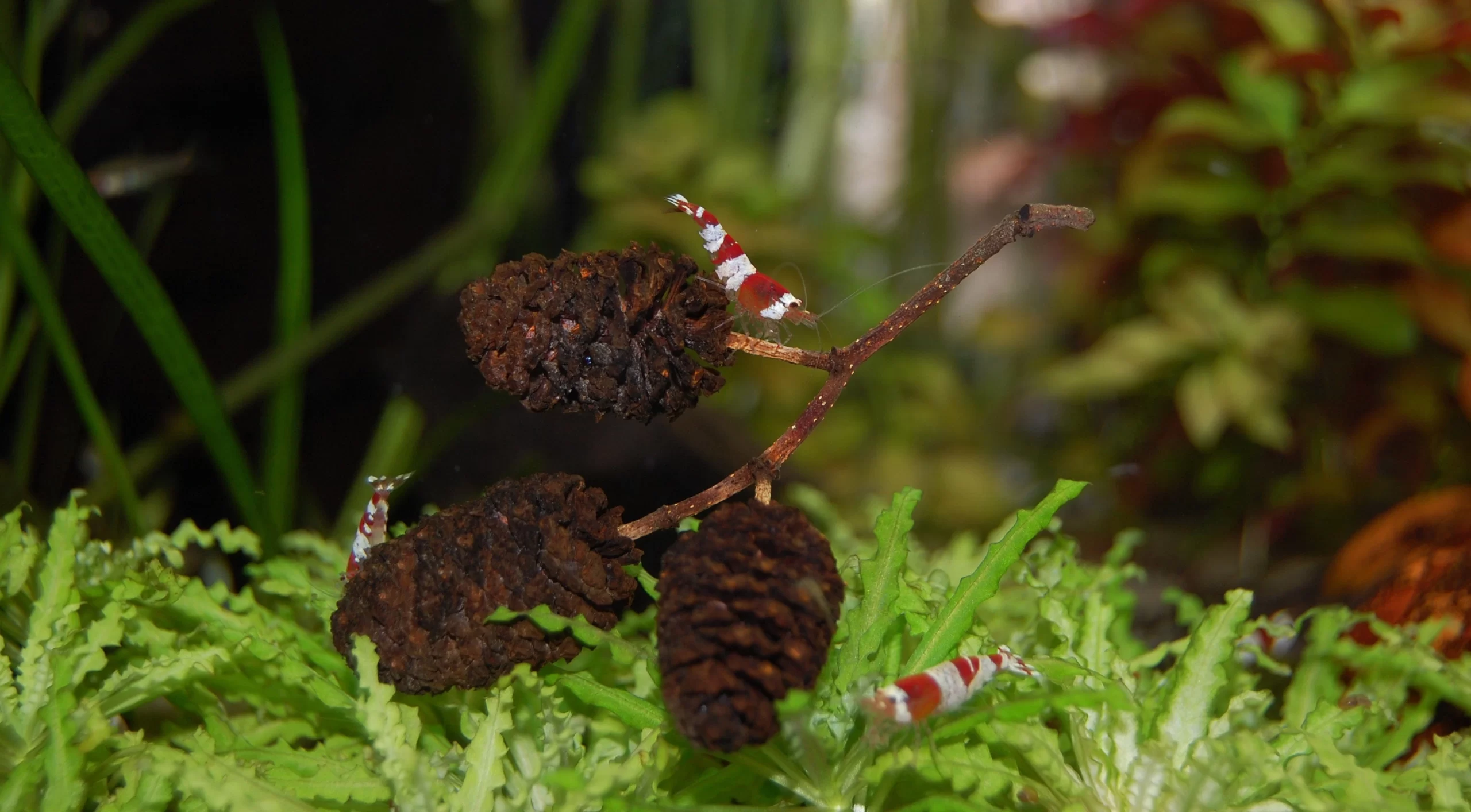

Invertebrates
Dwarf shrimp and dwarf crayfish enjoy great popularity because they already feel comfortable in well-maintained Nano Cubes. In addition, dwarf shrimps such as the Amana shrimp or invertebrates, for example the algae shrimp, are used as accompanying stock to counteract algae growth. Some water snails such as racing snails or helmet snails also successfully graze fresh algae. These invertebrates remain smaller than, for example, Siamese snout barbs.
Often shrimp or crayfish die shortly after they are put in the tank. There are reasons for this. Invertebrates are altogether more sensitive than ornamental fish and they build up their blood not with iron but with copper. However, this leads to the fact that copper is tolerated only in very small quantities. Even a normal aquarium fertilizer can therefore kill all shrimp.
The peculiarities of invertebrates
- Increased sensitivity during insertion
- Increased sensitivity to toxins
- Particularly high requirements for the water values
- Almost all invertebrates need particularly dense planting in places
- Many aquarium filters become traps for dwarf shrimps
- At least crustaceans shed their skin regularly and are then temporarily defenseless
- At least crustaceans are very sensitive to viruses, bacteria and fungal infections
These sensitivities certainly occur with many ornamental fish as well, but crustaceans in particular are more sensitive to them.
How to properly put invertebrates in the water
The aquarium should already be planted and run in, so the nitrite peak must be overcome. The water temperature and water values must also be suitable. Ornamental fish are usually placed on the water with the transport bag so that the temperature is equalized. Then the water volume in the transport bag is doubled with the aquarium water over a few minutes. The fish are then quickly placed in the water. Especially with crustaceans this is not enough, they should be put into a bucket suitable for food with some transport water. Through a hose, which is suitable for drinking water, water is sucked in and should drip through a stopcock into the bucket over hours, until the filling level has quintupled. Now the invertebrates can enter the aquarium. Self-explanatory, there must be no predators.
Invertebrates are particularly sensitive to these substances
- Heavy metals and toxins in general
- Plasticizers from plastics
- Colorants from colored gravel or decoration
- Chlorine
- many ornamental fish medications
- normal aquarium fertilizers
- “used” aquarium water
Regular water changes
Especially but not only the Caridina dwarf shrimps make high demands on the aquarium water. In addition to the aquarium filter, regular water changes are crucial for the water values. Here, neither chlorine nor copper or other toxins should be present in the fresh water. The water buckets and hoses should be suitable for drinking water and the water temperature of the fresh water must be very close to the temperature in the aquarium. Especially in smaller aquariums should be changed at least 50% of the water per week.
Planting and furnishing
Even without predators, many invertebrates and virtually all crustaceans need to find particularly dense planting. Without this, the animals would be stressed, which is fatal in the long run. But also the substrate and the filter should be suitable for the animals. Ideal are hamburger mat filters or sponge filters, which prevent the suction of particularly small animals.
Moulting problems
In the case of snails or mussels, the shell grows with them. Crustaceans, on the other hand, must constantly shed their skin. The fresh shell is first a skin that is still hardening. During these days, all crustaceans are defenseless, so predators or rivals would have an easy time. Therefore, there must be enough hiding places.
The other problem is deficiency symptoms that lead to molting problems that can be fatal. If this occurs, the feeding would have to be reconsidered. It is always good to use a suitable feed as a base and to provide variety.
Viruses, bacteria and fungal infections
Not only dwarf shrimp, but also many other invertebrates are even more sensitive to germs than most ornamental fish. That is why foliage, which releases tannins into the water, belongs in the aquarium. Besides oak, beech or fruit trees, sea almond leaves and alder suppositories are ideal. There is even sea almond tree extract. At least new leaves should be added to the aquarium regularly, which again release humic acid, tannins and tannins. These have a germicidal effect. Dwarf shrimps and other invertebrates also need these as food. However, it is important that decomposed leaves are removed again.
Concluding remarks on invertebrates
In shrimp and snails, there are many species that do not reproduce in freshwater, but only with brackish water. The planktonic larvae drift downstream and then swim back upstream. This is similar with some ornamental fish, which is why they hardly reproduce in the aquarium.
Caridina and the less sensitive Neocaridina dwarf shrimp, can interbreed within the genus.
Some invertebrates such as dwarf shrimp cannot be kept as individuals, but only in a group. Others will kill each other if there is not enough space to avoid them. Here would be male crayfish or even large-armed shrimp to name.
As is the case with ornamental fish, life eventually ends fatally. Dead animals are often eaten, but they should still be removed. They could transmit diseases and always pollute the water values.
If individual specimens die, this can be an alarm signal. When an animal dies, a water value test should be made to be on the safe side. If there is a problem, a large water change should take place immediately afterwards and possibly an agent to bind pollutants should be used.